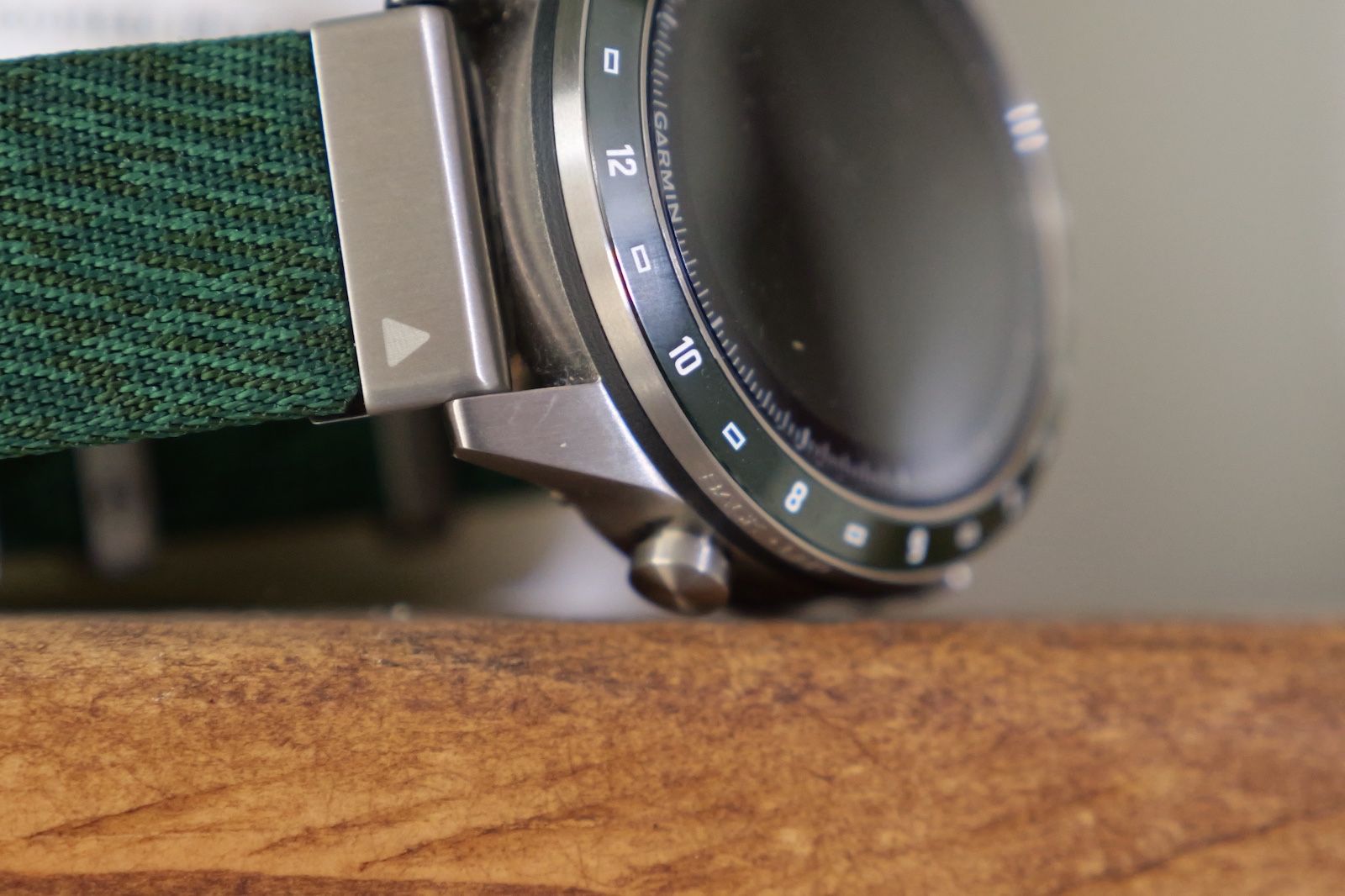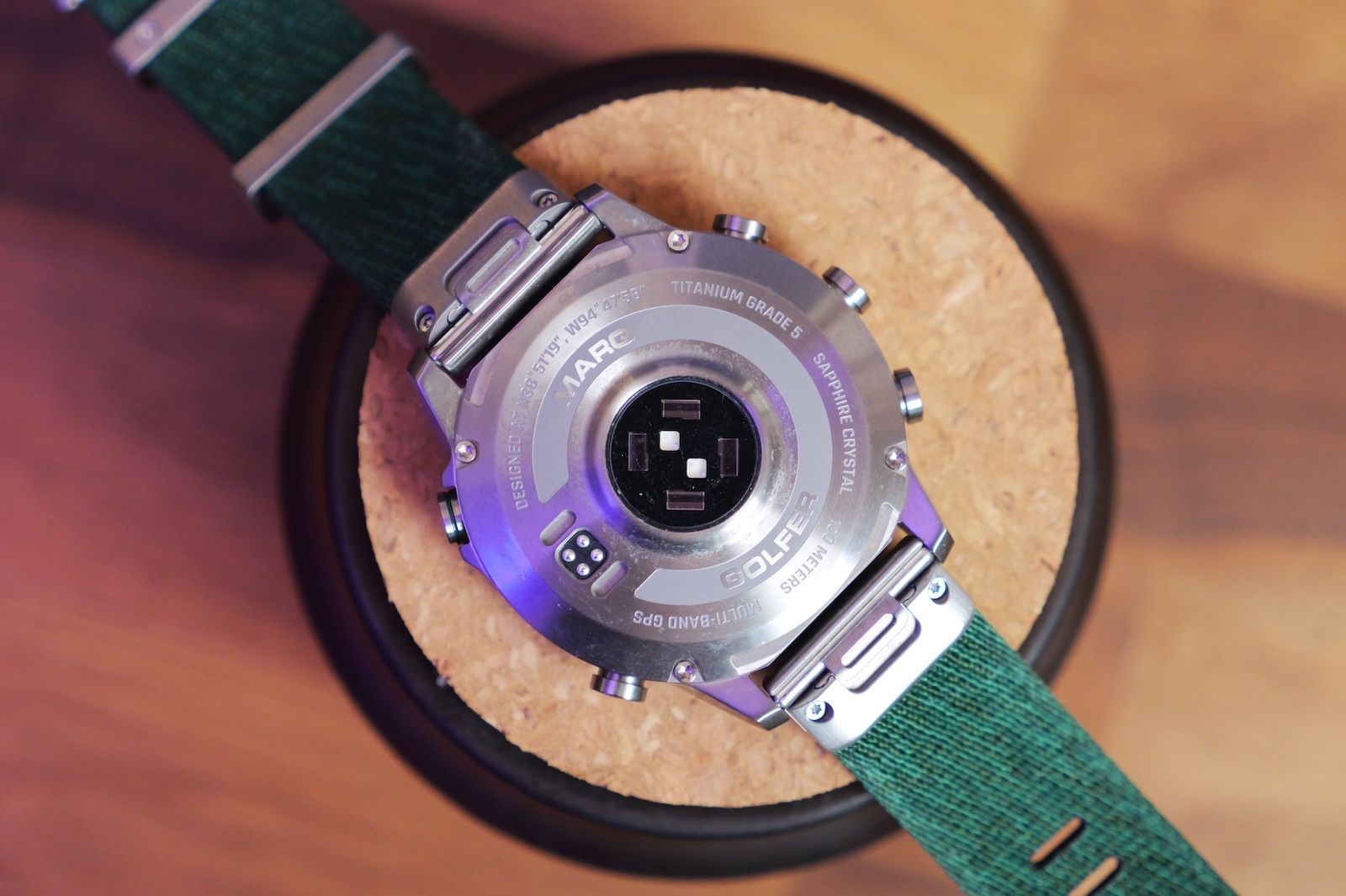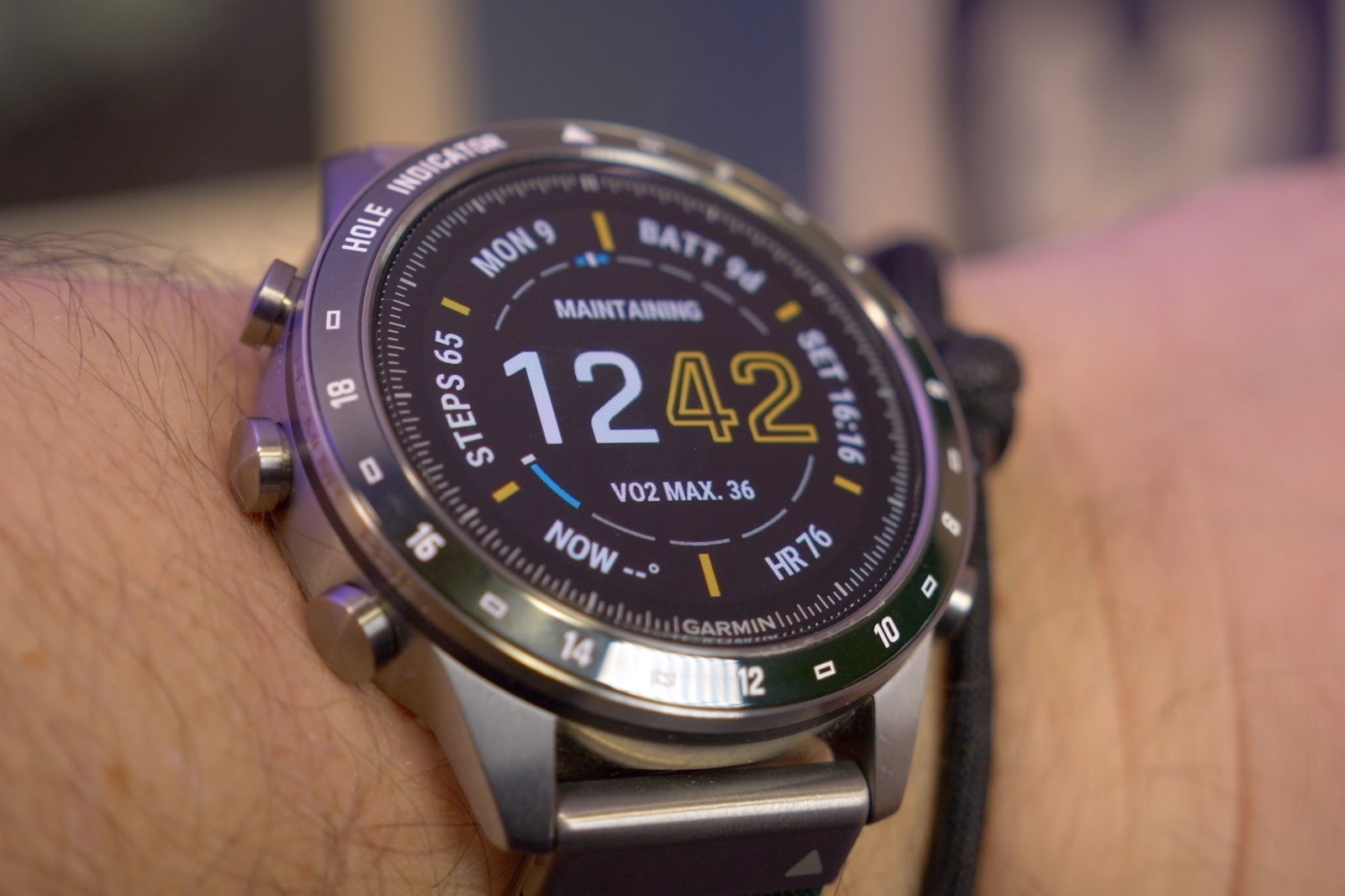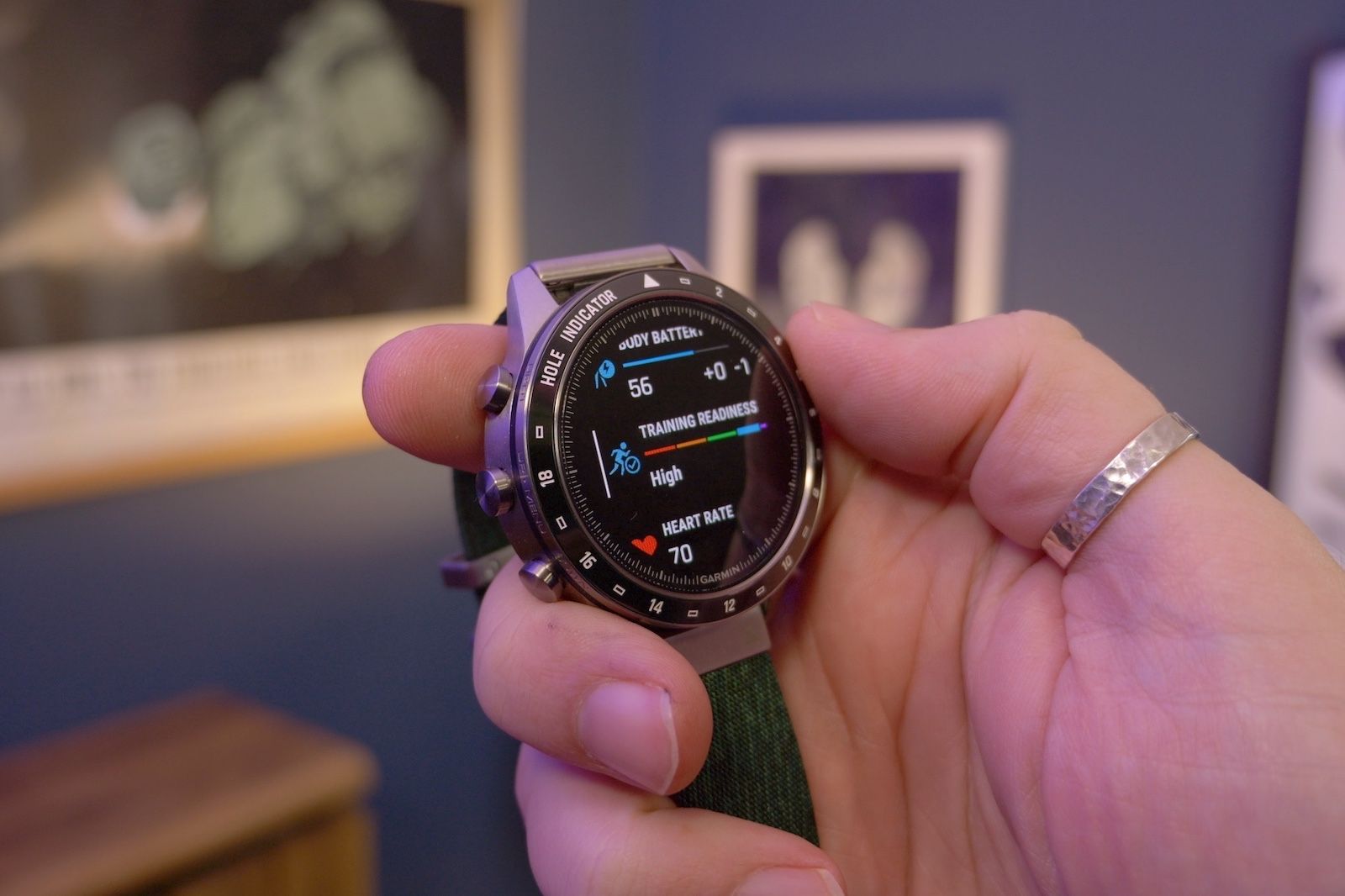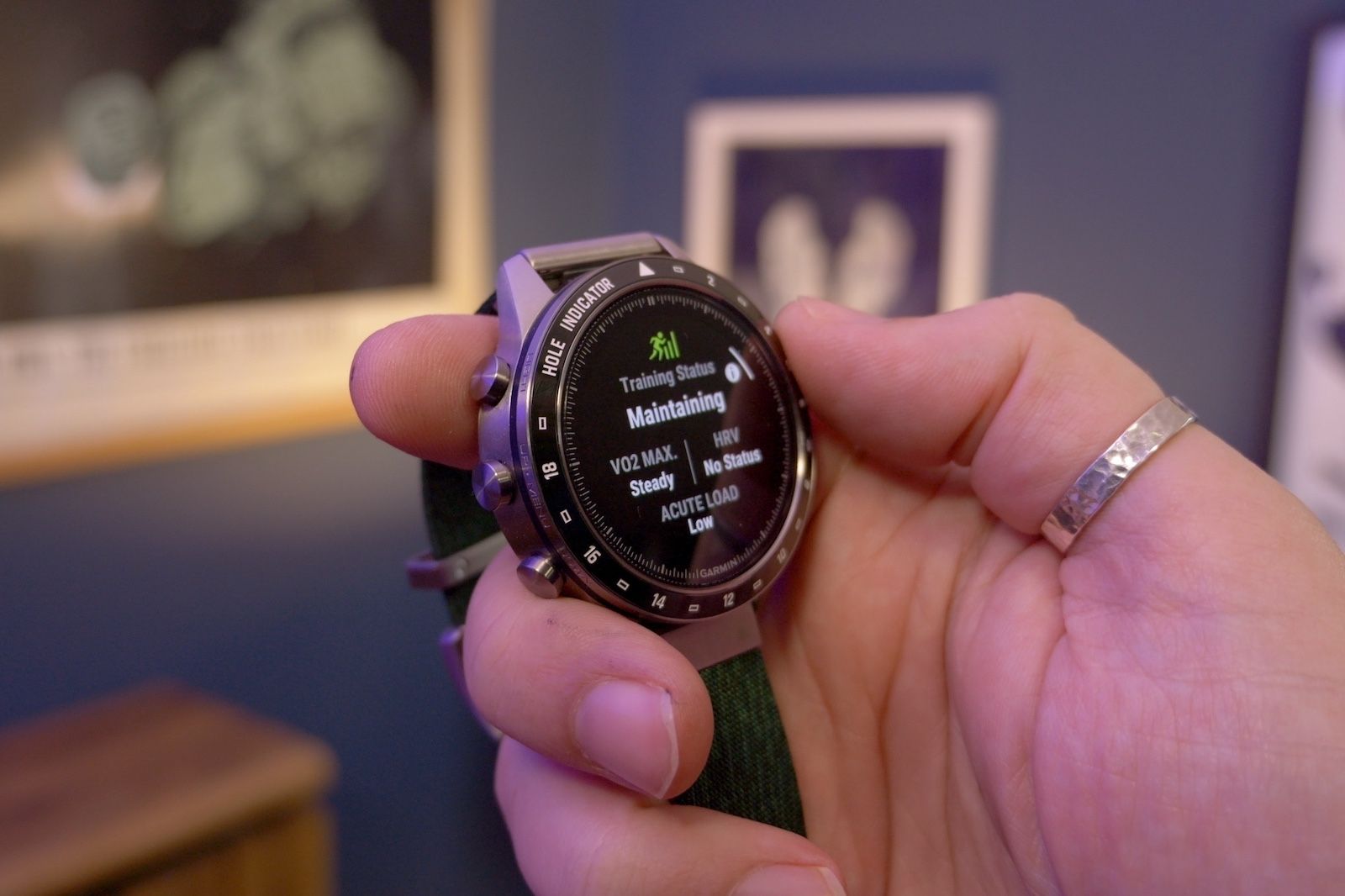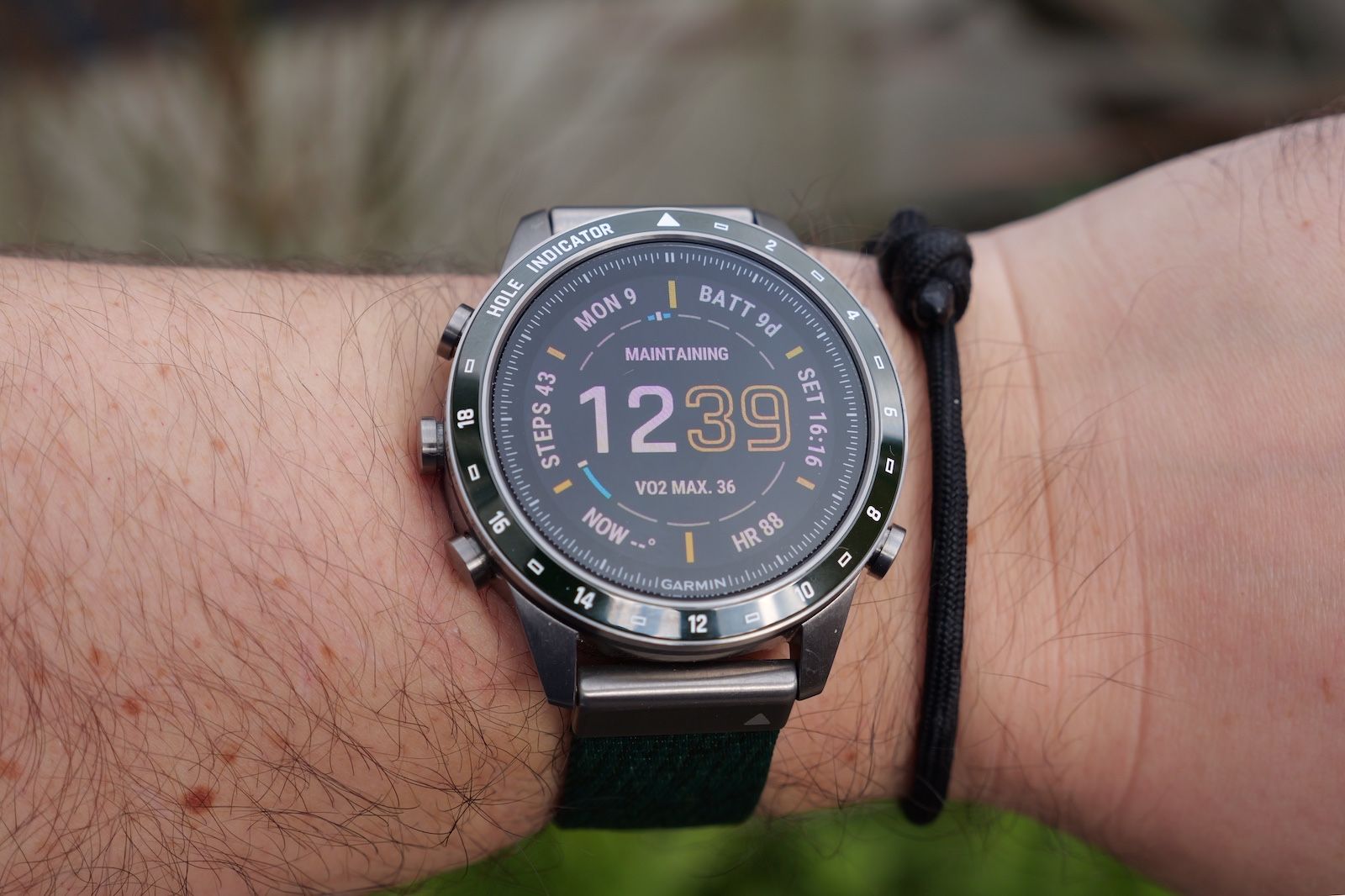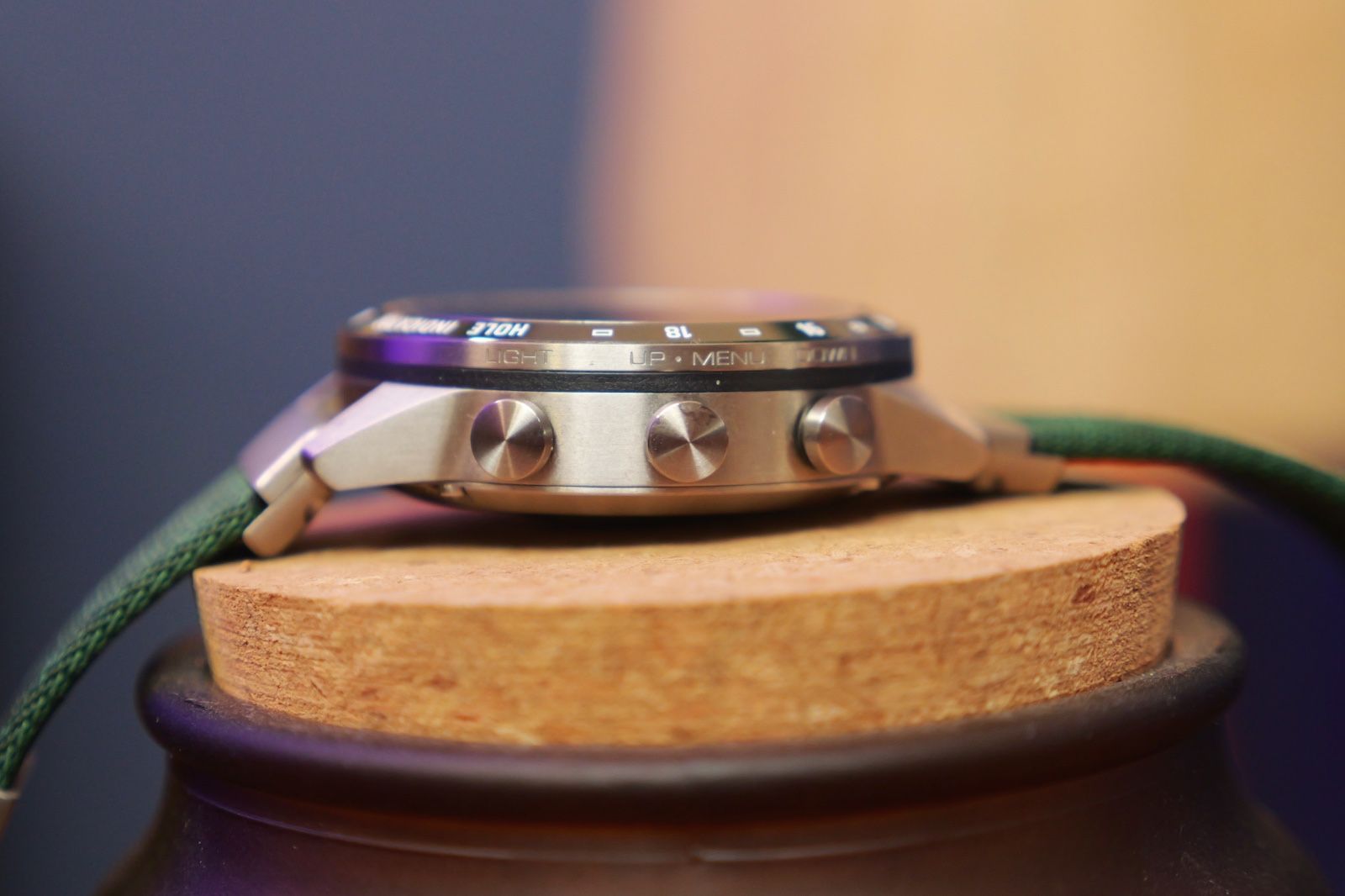Garmin has been building out its smart wrist gadget range over the past few years, building multiple styles and finishes at varying price points, competing with some of the best smartwatches on the market.
Right at the top of those price points is the second-generation Garmin Marq. It features everything you'd expect from a high-end Garmin, but in a luxurious super high-end case and design.
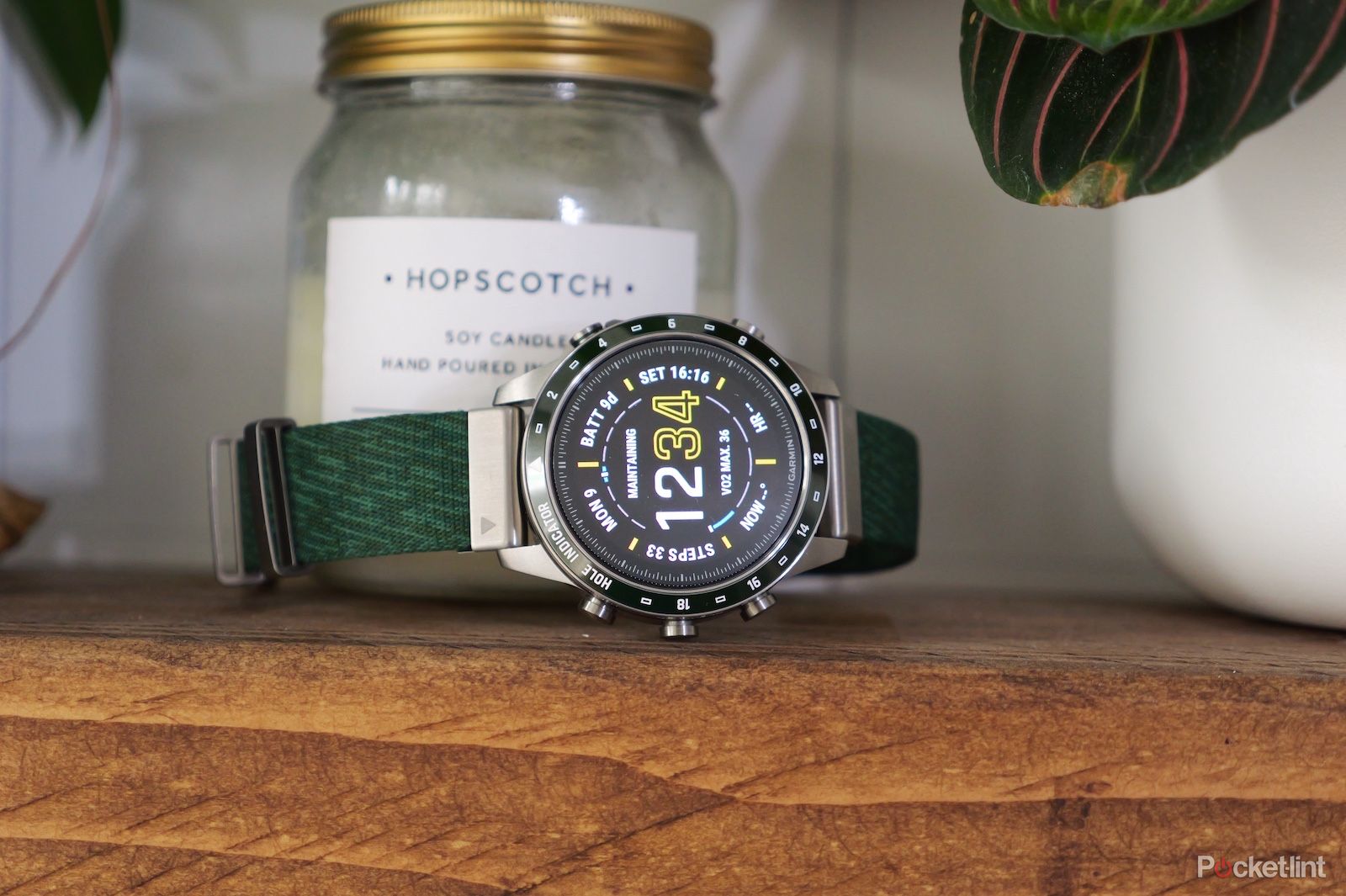
Garmin Marq (Gen 2)
The ultimate premium Garmin
If you want a watch that's both an exceptional fitness and exercise tracking device, but that also has the look and build of a high-end luxury piece of jewellery, this is the one. Garmin's second-generation Marq is a stunning timepiece with excellent sports tracking, strong battery life and the clearest screen we've ever seen in a smartwatch.
- Stunning design and build quality
- Probably the clearest display in any smartwatch
- Strong battery life
- Excellent sports, fitness and activity tracking
- Works with Android and iPhone
- It's prohibitively expensive
- Garmin Pay doesn't support all banks
Design
- 46 x 46 x 15mm - 87g
- Titanium case - Sapphire crystal lens
- 100 metres waterproof
- 22mm QuickFit bands
- Magnetic charging cable
When you're charging big money for a watch, there's an expectation that you deliver a finely crafted object made with high-grade materials. Garmin has delivered here, offering a design reminiscent of luxurious mechanical watches, with no expense spared on build.
We've been testing the Golfer edition, one of the more expensive SKUs. Like the others in the Marq 2 range, it has a titanium case, but the bezel around the display features a custom-etched ceramic index, finished with a dark green hue and white markings.
There's no denying it's quite a chunky watch, featuring a similar 46mm case to both the second generation Epix and the Fenix 7, it's also pretty thick at 15mm. It's fair to say it has some heft, then, and likely isn't a watch for smaller wrists.
This particular model ships with two straps: the premium nylon weave strap - in green - plus the usual thick silicone strap. The weaved nylon is a high-quality band which isn't quite as supple as some other, cheaper nylon bands, but it's certainly not as stiff as the 'heathered' nylon that came with some editions of older Fenix watches.
All the metal fixings and trimmings feel very well-made, and it clips in place using Garmin's usual proprietary quick-release mechanism. It's very easy to detach and reattach, by pulling back the catch that holds it to the pin.
However, it does mean you're a little limited when it comes to buying additional straps. Garmin's are pretty expensive, and there aren't a huge number of Garmin quick-release alternatives from third parties. At least, not when compared to universal quick-release options or Apple Watch straps.
Like many of its other watches, the Marq is designed to take a beating. It's waterproof up to 100 metres, so you can be sure it won't be troubled by outdoor activities in the rain or your sweatiest workouts, and even copes just fine when you go swimming or take part in any water-based activities.
The Sapphire crystal material on the outside is designed to be scratch resistant and hard to break, as is the titanium case. All in all, it's a solid watch, but without that outdoorsy look and feel you get lower down the Garmin watch range. It wouldn't look at all out of place being worn with a suit in formal settings. In fact, it would add to that style of dress.
One other thing we're glad to see ditched from the cheaper watches is the charging cable. Garmin's new Marq still has four physical contact points for charging - so it's not wireless - but this time there's a magnetic cradle, so it just snaps onto the back without the need for any force. This makes it easy to rest the watch flat on your bedside/desk, plus the cable has a USB-C connector port on the other side.
Otherwise, it's built based on the same principles as a lot of other Garmin models and features a five-button control system. It's been a mainstay of Garmin's flagship models for a few years now and means you can control the interface with intuitive physical buttons or the touchscreen. The light, up and down buttons live on the left, and the select/start/stop and back buttons are on the right. It's pretty easy to get to grips with, and the buttons themselves are reassuringly sturdy.
Display and interface
- Sapphire crystal domed lens
- 1.2-inch round AMOLED display
- 390 x 390 resolution
- Touchscreen
It would be no exaggeration to say that the display on the Garmin Marq 2 is among the clearest and brightest we've ever seen on a smartwatch of any kind. In fact, it's probably the clearest.
Most of that isn't down to the colour panel, its backlighting or its pixel density. Although with a 390 x 390 resolution AMOLED panel, those are certainly still high points. It's more about the glass on top of it. Put it side-by-side with a Garmin Epix and you'll immediately see the difference in optical clarity.
Garmin's super premium watch features a really high-grade sapphire crystal glass lens, and it's domed for clarity, giving this impressively clear view of the screen below. In fact, even when the screen's off and you catch reflections in the glass, those are sharp and clear too, thanks to the way this lens refracts and reflects light.
That, combined with the bright and vivid AMOLED panel means you get great contrast levels and vibrant colours, making it ideal for colourful and detailed watch faces, but more importantly, easy to read when you're outside on a hike, or on a run, and you want to glance at your data while on the move.
The interface itself is the same as what you'll find on other Garmin watches, meaning a swipe down (or up) on the screen takes you to your list of glances. This is - effectively - a neat list of the key information you want to glance at during the day. Hence the name. This can be customised and re-ordered based on what you want to see. So it can show your training status, body battery, heart rate, VO2 Max, weather, sunrise/sunset time, compass, floors climbed, steps, intensity minutes and any manner of other key bits of information you'd likely need. And, if you tap on one of these glances, it takes you to the full breakdown of that particular metric or data point.
It's pretty basic but is less limiting than Wear OS in that you don't just get four or five widget cards to choose from. You can add/remove any number of glances, and dive in for a better look whenever you like.
Lifestyle and smarts
- Garmin Pay contactless payments
- Offline music and smartphone notifications
The one area Garmin is a little lacking - compared to what we'd consider "proper" smartwatches - is interactive elements and apps. You do get notifications from your smartphone, but beyond a few preset quick replies, you can't do much else with them except read them. Likewise, there's not much in the way of third-party application support.
Still, this is a compromise that's well worth living with, because it means the watch has incredible battery life and is much longer than any Wear OS watch or the Apple Watch Ultra. And, from a feature standpoint, you do still get some handy lifestyle inclusions.
One of the most useful is offline music for popular streaming services. With this feature - and the right subscription - you can download your favourite playlists onto your watch from Spotify, Amazon Music, Deezer or iHeartRadio. And with 32GB storage available, there's room for a good number of them. Pair a set of sports earbuds, and you're good to go.
Another is Garmin Pay, the company's contactless payment system which is great in a pinch, as long as you're with a bank that supports Garmin's protocol. It's not quite as efficient and quick as Apple Pay - because it requires a PIN code entry every time - but if you're without your phone and wallet, you can rest assured that you can pay with your watch in an emergency.
Health and fitness
- All-day heart rate, SPO2 and stress tracking
- Fitness Age, Body Battery, Recovery and Training Readiness
- Multi-band GPS, Glonass and Galileo support
- Barometric altimeter, accelerometer, gyroscope, thermometer
In the past, Garmin's been criticised for its confusing, data-heavy approach, but those days are long gone. That's not to say you don't still get a tonne of data. You do, and you can really dig into it all in the Garmin Connect app if you want to. But what Garmin does with all the data now is so much more user-friendly than before, and far more useful.
Using the watch's Glances interface, you can gain access to a number of different relatable metrics. Elements like recovery time have been added to with 'Training Readiness'. So you know not only how much time you need to rest, but also how ready you are to take on some exercise.
This is effectively the Garmin watch looking at your most recent exercise, its intensity (based on heart rate and duration), and combining it with your all-day movement and activity to determine how well rested and prepared you are to take on another session.
If you're a runner, you also get the 'suggested workout' which uses that same data to suggest a workout when you go to start a run, based on your own physical needs. The idea is to stop you from overreaching and becoming counter-productive in your exercises. Runners also get some useful metrics to look at during and after their runs. Of course, that includes your usual pace, distance, heart rate, cadence and elevation, plus the map with the route of your run.
Just as useful now - if not more so - are the stamina/potential stamina and the power metrics. The former can see how much juice you have left on that run and can help you decide if you need to back off to make the run longer or push harder if you've got lots of potential stamina left and not much distance to go. The latter (power) can show how much effort you put into different stages of the run and then breaks it down into zones at the end of the run.
There's also Fitness Age, a metric which helps you understand where your fitness is compared to other people of the same age and shows you some handy tips on how you can improve that. This uses your VO2 Max, intensity and performance data to measure. In a lot of ways, these bits of information all - for the most part - look at all the same data, but just find useful angles and ways in which to present them more relatable, and that's a move we can completely get behind. And it's particularly useful if you're a runner.
However, hving also used it for some yoga too, we can safely say Garmin needs to work on the smarts behind the yoga mode. Like the strength training mode - which asks you to press a button after every set - yoga mode wants you to press a button after every pose which, when you're flowing, isn't at all practical. That meant just letting it run as if the entire 45-minute session was one pose. It'd be better and simpler if the 'pose' option wasn't there, and it just recorded - this way it could look at your movement and could give you an indication of how fluid and controlled your flow/poses were.
Performance, accuracy and battery life
- Up to 16 days battery (6 days always-on)
- 32GB storage
- Wi-Fi, Bluetooth and ANT+
How long the battery lasts depends on a lot of factors, like how you've set up the watch's power modes, whether or not you have the always-on display enabled, the length and type of activities you're tracking, and if you listen to music while you're working out. All of it has an impact.
With all of that said, with our own typical usage - with the watch set up and left in its default mode with the always-on display disabled - we managed more than two weeks on a full charge. In fact, the average was between 15 and 16 days.
As for our typical use, that meant a workout of some description almost every day. With four or five 20-30 minute outdoor running workouts - with GPS - per week, and 30-45 minute yoga sessions on our rest days. This was with it connected to our smartphone displaying all the notifications, and wearing it at night to track sleep.
It's a very strong performer then, in terms of battery, and that's just in its default modes. You get other power management presets to choose from as well, helping your battery go even longer, with the Expedition GPS mode good for 14 days of continuous tracking on a full charge because it limits lots of other functionality to focus purely on GPS and route tracking.
Its core functionality has performed flawlessly in our tests too. When starting a workout outdoors that needs GPS, it only takes a few seconds to lock on to the GPS signal, and while tracking, it does so accurately and consistently thanks to the multi-band GPS support.
We took it out on multiple runs across a few weeks alongside the Apple Watch Series 7 (which we regard as a strong performer) and it tracked pretty much identically. To the point where we'd feel the vibration at almost exactly the same time to inform us of our duration/pace for each kilometre. Heart rate tracking was strong too, and it adapts well to changing heart rates when doing interval training and speed runs.
Verdict
There's no denying that - as sports, health and fitness tracking smartwatches go - there are few out there that match the Marq 2nd gen in performance and build. It's got that combination of excellent performance and data, handy lifestyle features, long battery life and stunning design that make it an absolute delight to wear and use every day.
There is one very big sticking point, however: the price. We're not just talking a few hundred pounds or dollars more than the Fenix and Epix models. This is priced like a luxury watch, costing near enough two grand, and that is going to be a tough pill to swallow for a lot of consumers. It's simply not in a price range that's comfortable for most people.
If you absolutely have to have the best Garmin, and one that's designed using the absolute best materials and finishes, then nothing stops you from buying it. In fact, if the price doesn't concern you, we suspect you'll love it. But you can get a lot of the same experience using the Epix for about half the money.


